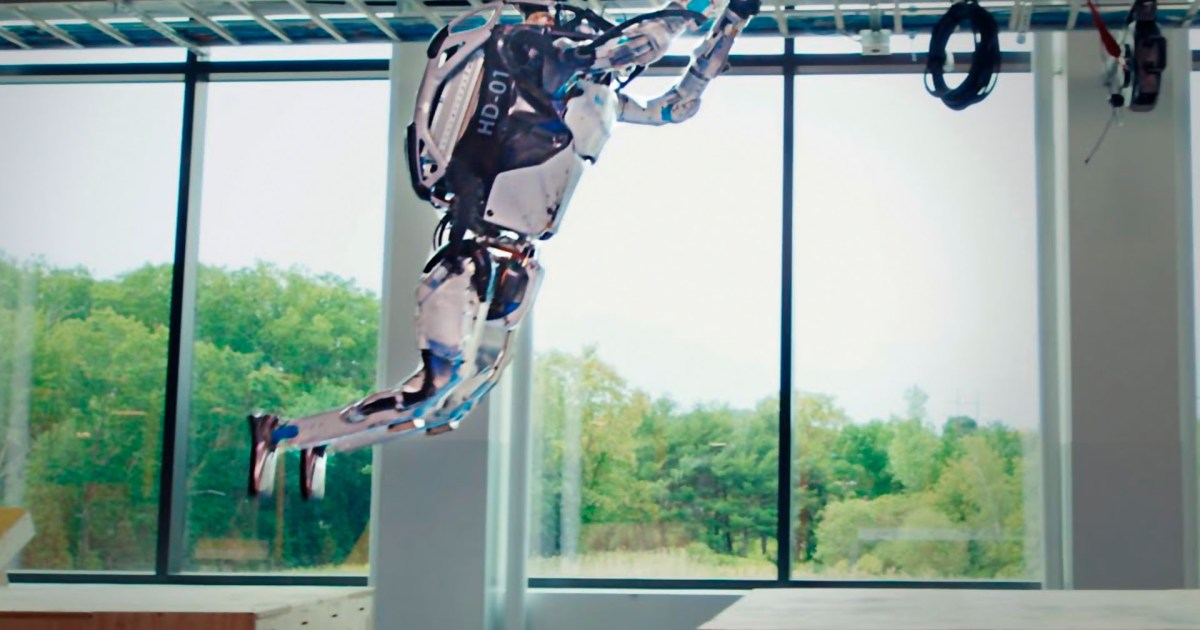A new video clip depicts Boston Dynamics' Atlas robots performing for the first time a series of jumps to override obstacles as parkour athletes do, leaping across gaps and performing coordinated rear flips. It jumps on the beams, despite its great weight, and is more graceful than most humans.
Boston Dynamics is trying to increase the movement skills of the robots, yet this kind of performance takes "months" of development, according to a press release from the company, and it is likely that the robots will not practice these movements on the street soon.
And while the robots can adapt to subtle changes in location or surroundings, they have experienced a 50 percent failure rate while jumping, according to an initial report from Engadget.
The company said that even simple gestures such as raising the hands at the end of the video did not go smoothly, and stressed the need to further improve the movements, because the robots' body flexibility is limited due to their lack of a spine and the relatively weak arm joints.
So far, the company has not increased its production of Atlas robots, such as the Spot robotic dog.
The current robot is a test model to know the limits of robots, which is why parkour is chosen to help develop the movement of robots in the future, which may eventually help humans in a wide range of tasks that require a superhuman effort, such as catching criminals, as they must Machines with human-like reflexes are designed to help humans, never to harm them.
The ability to improvise
The kinetic developments shown in the video are amazing;
In one shot, the Atlas robot uses great upper-body force while vaulting over an iron bar, performing highly complex operations while balancing and managing weight distribution across all four limbs simultaneously.
Most of the previous videos featuring the Atlas robot involved movements using the lower body (except for a few laps and dance moves).
Aaron Saunders, vice president of engineering at Boston Dynamics, says the Atlas development team will be working on more advances in the upper body, and future improvements may help the robot do something like drag, which will open the door to a much broader range of activities.
Another major advance has to do with Atlas' ability to advance real-time awareness of robotics in unprecedented ways.
“Atlas moves are driven by actual vision now, and they weren’t previously,” said Atlas team leader Scott Koendersma of Boston Dynamics in a press release. For example, previously movements such as dance videos were about creating a variety of "The dynamic movements are tied together into a routine that we can play over and over again. But in this video the robot's control system still has to make a lot of critical adjustments while in flight to maintain balance and assess posture."
Koindersma announced that this is the first time that Atlas has been operated using its own visual perception of motion, rather than relying on pre-programmed motions that would only operate in a static environment.
And while the movements of the bots in the new video are still a bit limited, we're also seeing the beginning of improvisation based on machine capabilities, rather than digital formats (such as artificial intelligence).
The video above, also released by the company, is a behind-the-scenes clip that shows the heavy toll these movements inflict on machines, yet this video shows that we are today a big step closer to testing humanoid robots to perform an unprecedented range of challenging tasks that require active movement.

